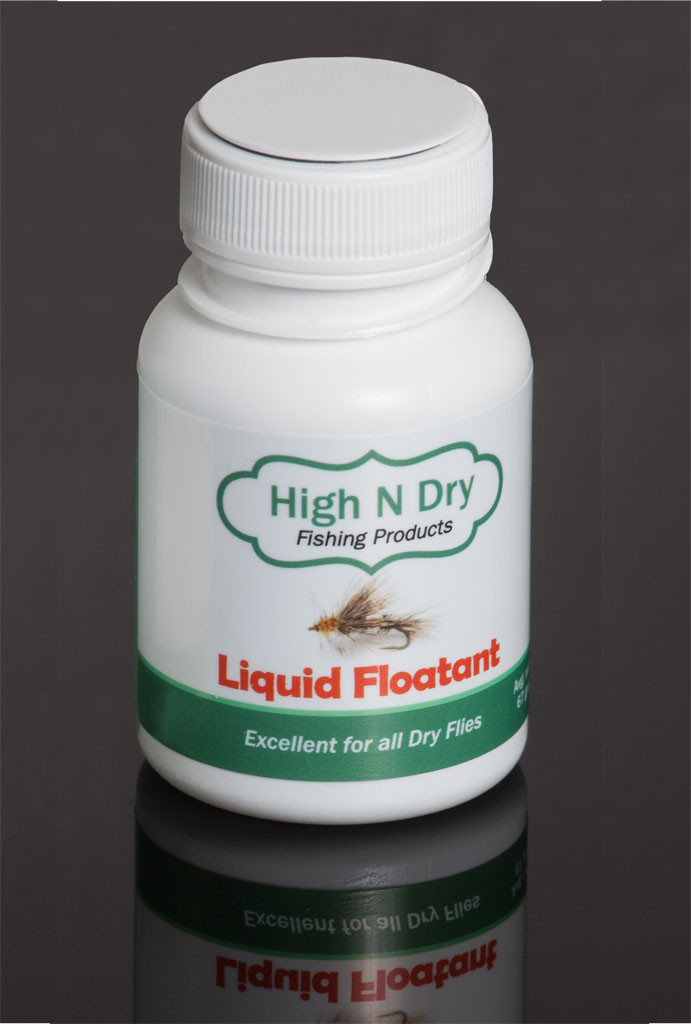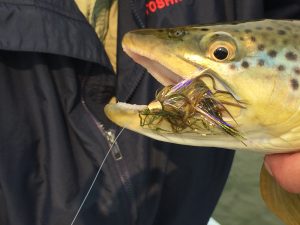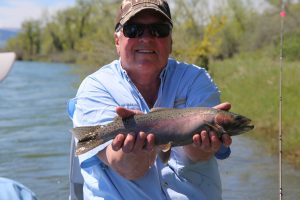Posts by Ben Tronnes
High N Dry wins Gray’s Best 2019
We at High N Dry Fishing Products hope you had a wonderful time on the water in 2018. To help us usher in the new year, we share some amazing news: High N Dry’s Liquid Floatant was awarded the prestigious title of Gray’s Best in 2019!

Each year, the editors of Gray’s Sporting Journal, “select gear that not only makes good first impressions, but also satisfies during repeated use.” Important to us at High N Dry, the editors “make choices of our own volition, absent encouragement and incentive from the manufacturers. Further, Gray’s Best winners deliver on the claims of their makers but also have an extra attribute, an extra something that triggers a tenor of feel, remembrance, or aesthetic and can be defined only as … satisfying.”
Gray’s Best can be found in the Gray’s Sporting Journal 2019 Expeditions and Guides Annual.
The following are some excerpts, from Angling Editor Miles Nolte:
“For years I have faced a floatant dilemma: use the environmentally friendly stuff that requires reapplication every other cast or the stuff that keeps my feathers cork-buoyant but smells like jet fuel and leaves shimmering rainbow rings on the surface film.”
“These gentlemen applied their decades of chemical wisdom to the problem and created a new line of environmentally friendly products that actually work. Throughout the entire 2018 guide season, I dipped every dry fly in High N Dry Liquid Floatant ($12) and can report it works just as well as the stuff that smells like paint thinner.”
We are excited and honored to receive this distinction. Our goal at High N Dry Fishing Products is simple: to build the worlds best performing and safest floatants. This is evidence to us that our hard work is paying off. For more information, visit us at www.highndryfishingproducts.com and pick up a copy of the Gray’s Sporting Journal 2019 Expeditions and Guides Annual.
Bighorn River (Part II)

While not a shiner pattern, streamers have generally been very effective on the Bighorn River this year.
My Dad, Dennis, and I were out on the Bighorn River in early May. The Bighorn Mountains experienced a tremendous year in terms of snowpack. As of May, it was still something like 230% of normal and the melting snow has to go somewhere. As with most tail waters, extremes on either side of the spectrum create a no win situation for those controlling the release of water from the dam. For more on the history of the Yellowtail Dam, take a look at part I of this series.
In this case, those of us brave enough to give the high flows a shot weren’t disappointed. We spent the entire week before our trip watching the numbers, however, as the CFS (Cubic Feet per Second) rose almost each day. By the time our boat was ready to hit the water, we were expecting to float down at about 14,000 CFS. I’m not going to pretend like that didn’t give us second thoughts about heading out to Ft. Smith.
Standard flows on the Bighorn are in the 2,500 to 3,000 CFS range.
When you fish the Bighorn once or twice a year, like I do, you learn just enough to surprise yourself by remembering certain holes from the previous visit (“that seam right there is where I caught a 20 inch rainbow last July”). Or you can start to impress your buddies by naming the areas you will be meeting for lunch.
“Let’s meet at noon on Crow Beach.”
“Where is Crow Beach?”
“It’s just around the bend, downstream from Rattlesnake Island.”
“Oh … still not helpful.”
Believe it or not, fishing the Bighorn River in flows reaching 14,000 CFS simplifies the fishing experience. You lose a lot of those islands you were supposed to remember. There aren’t many “beaches” left to stop and eat lunch, or fish, for that matter. The river is humming, and you don’t have to worry about getting to a great wading spot before everyone else. You simply float.
While in the boat, you are definitely moving downstream at a faster rate than usual, but it isn’t something the lesser-experienced rower couldn’t handle. The only additional challenge I find is that the river’s “hydraulics” have changed. By that I mean it is much harder to keep the boat in a steady position a certain distance from the bank. For some reason, the water tends to push you in and out unexpectedly.
The fishing is fairly easy. You don’t get out of the boat much, if at all. So you just throw streamers or nymphs as you meander downstream. In this instance, we found ourselves in a situation uncommon to the Bighorn River. Because the water was entering the river from the top of the dam, it created a phenomenon the locals called a “shiner hatch.” Millions of white, two to three inch minnows went over the dam with the water. Thus, the streamer fishing was fantastic.
Streamer fishing is one of my favorite methods for a number of reasons. (I realize we make floatants. But sometimes dry fly fishing just isn’t practical). First, I’m not the most technically proficient fisherman in the world. Streamer fishing allows me to just throw the damn thing out there, without worrying as much about presentation and drift. There are rules, though, such as getting the streamer as close to the bank as possible. I do try to adhere to that.
This may sound funny, but with streamer fishing, you also get to experience the hits and misses of many fish. In a sense, it’s satisfying to know that you are able to draw fish to the fly, even if you don’t get a full eat. Because the Bighorn is fairly clear, in most areas, you get to watch the entire process in action. You see the streamer working. You actually see the fish hit it. You get a sense of just how aggressive trout can be.
When the hook is set, however, it is a great deal of fun.
While the fishing itself has simplified, getting the boat off the river at the takeout is not so simple. For us, it took three days to perfect our landing. The first day was an absolute disaster. Our goal was to take out at the 13 Mile access. While 13 Mile gives you two take outs to hit, neither one provides much of a “landing strip” in which to slow down and glide right in. Now compound that problem with really high flows.
Despite our foresight to plan way ahead, we missed the first take out. I also lost Dennis at some point in the process (he survived). As we came up on the second takeout, my dad one leg over the side in order to step out and assist the landing. He saw that the river there was still over six feet deep and thought better of it (so he, too, survived). With that, I didn’t get us close enough to the takeout for the anchor to be effective (word of caution, at 14,000 CFS, do not throw the anchor unless you are in slack water. The flows can pull your boat under water).
We were well on our way downstream before we finally got the anchor on the beach about 30 or 40 yards further. It ended up okay, I just had to walk the boat back to the take out. All I can say is … thankfully no one was at the access to see this fiasco.
We returned in August. It was a completely different river, which will be the topic of the third and final post on the Bighorn River.
The Bighorn River (Part 1)

Dave Tronnes with a dark, fat Bighorn River rainbow in May, 2017.
We have grown this year as a company. High N Dry Fishing Products decided to improve our social media and web presence. We know we can provide information and entertainment to our customers and end-users is through our blog page. Thus – you are seeing the very first High N Dry blog. This is the first time I’ve ever actually written a blog post, so be patient with me as I learn what the heck I’m doing. I hope this blog will be a pleasant mix of information and entertainment. It will cover many areas related to fly fishing in general, but information related to our products as well.
This post is the first of three on a subject near and dear to my heart – the Bighorn River. The Bighorn River is the first “real” river I fished when I was learning how to cast a fly rod. It is also the first river I floated without a guide.
The High N Dry crew recently met in Ft. Smith, Montana for a quarterly business meeting and, of course, to fish. Ft. Smith is a small, rural community in southeast Montana. Although in existence since the mid 1800’s, it was rejuvenated as a hub of outdoor recreation due to its proximity to the Yellowtail Dam, the Bighorn Canyon National Recreation Area, and the Bighorn River. Since this blog is intended for our website, I have to mention that you should stop in to the Bighorn Angler, the Bighorn Trout Shop, the Bighorn River Lodge, or the Bighorn Fly & Tackle when you are in the area. They all carry High N Dry products – a must have – before you hit the river.
The Bureau of Reclamation dammed the Bighorn River in the 1960’s to help alleviate concerns over flooding throughout the Missouri River basin. The dam was a small piece of a much larger project that included several dams throughout the Missouri River system. The Bighorn River flows through the Crow Reservation. As with most dam projects, construction of the Yellowtail dam was met with vehement opposition, mostly from a faction of the Crow Tribe. Nevertheless, the project was completed in 1967.
I consider myself an environmentalist, so I have a visceral reaction to the general idea of damming any wild river. The decline of several previously wild fisheries, particularly the decline of ocean-run salmon in the northeast, is directly attributable to the construction of dams within their banks. Dams are controversial, and the Yellowtail Dam is no different.
Historically, the Bighorn was a wild river with rapidly changing water levels and temperatures, caused by drainage from the nearby Bighorn Mountains. The river was always loaded with sand and gravel. It wasn’t a decent trout fishery by any stretch of the imagination.
Now, with the dam, the Bighorn is relatively stable (more on that in the next blog). When you visit the river, there is what I consider as a complex system of irrigation ditches and channels that provide irrigation to several properties in the valley. Houses are built within 30 feet of its banks – evidence that flooding is no longer a major concern. Personally, I marvel at the abundance of wildlife in and around the water. many different species of waterfowl and other birds, muskrats, snakes, deer, and, of course, fish share the gifts of the river. Because of the Bighorn River’s stability, because sediment is now deposited in the reservoir as opposed to the river itself, and because it’s fed by the cold water at the bottom of the reservoir, it is one of the best trout fisheries in Montana.
My perspective is admittedly one-sided. The locals will likely consider it ”ill informed.” But this is one of those rare occasions in which the addition of a dam on a historically wild river appears to be a positive addition – for all creatures who rely on the river everyday. There will undoubtedly be those who disagree with me, but by all indications most humans certainly benefit from the Yellowtail Dam.
If nothing else, it provides the High N Dry crew a reason to have a business meeting in Montana. In my next post, I will discuss the flows the Bighorn experienced this season, how it affects the fishery as a whole (good and bad), and my struggles rowing in flows reaching 14,000 cfs.
